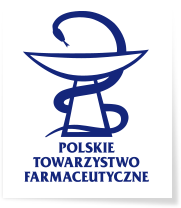Magdalena Zielińska, Marta Andrzejewska, Zuzanna Grunwald, Wioleta Opieka, Magdalena Woźniak, Tomasz Hermanowski
Ocena jakości wytycznych praktyki klinicznej dotyczących postępowania w astmie za pomocą narzędzia AGREE II
2023-09-12
Wytyczne praktyki klinicznej stanowią wsparcie w optymalizacji opieki zdrowotnej poprzez promowanie zaleceń opartych na dowodach naukowych. Odpowiednia metodyka i rygorystyczna strategia podczas formułowania zaleceń zawartych w wytycznych klinicznych ma istotny wpływ na ich jakość, wiarygodność i możliwość skutecznego wdrożenia zaleceń w praktyce.
Cel badań. Celem przeprowadzonego badania była ocena jakości wytycznych praktyki klinicznej dotyczących postępowania w astmie przy użyciu narzędzia AGREE II. W ramach analizy porównano jakość polskich wytycznych klinicznych z wytycznymi opracowanymi w innych krajach oraz przez organizacje międzynarodowe. Ocenie poddano 9 dokumentów wytycznych: Postępowanie w zaostrzeniach astmy u dorosłych – wytyczne dla lekarzy rodzinnych (twórca: Naczelna Izba Lekarska, Polska), Global Strategy for Asthma Management and Prevention (twórca: The Global Initiative for Asthma (GINA)), Asthma and Respiratory Foundation NZ Adolescent and Adult Asthma Guidelines 2020: a quick reference guide (twórca: Asthma and Respiratory Foundation Nowa Zelandia), Australian Asthma Handbook V2.0 (twórca: National Asthma Council Australia), National Clinical Guideline: The Diagnosis and Management of Asthma in Adults V2.1 (twórca: Ministry of Public Health Katar), SIGN 158 British guideline on the management of asthma (twórca: Scottish Intercollegiate Guidelines Network (SIGN) British Thoracic Society), Management of Asthma in Adults (twórca: Malaysian Health Technology Assessment Section (MaHTAS)), Asthma: diagnosis, monitoring and chronic asthma management (twórca: National Institute for Health and Care Excellence (NICE)) oraz The Spanish Guideline on the Management of Asthma (twórca: Guía Española para el Manejo del Asma (GEMA)).
Wyniki. Najwyżej punktowanymi obszarami były: przejrzystość i sposób prezentacji zaleceń (wszystkie wytyczne oceniono na 100% lub blisko 100%), zakres wytycznych i cel oraz niezależność redakcyjna. Domeny, które zostały najniżej ocenione dotyczyły obszarów związanych z zaangażowaniem zainteresowanych podmiotów oraz stosowalnością (odpowiednio 79,3% oraz 69,2%). Największe różnice zaobserwowano w obszarze niezależności redakcyjnej – od 100% (maksymalna możliwa do uzyskania liczba punktów) do 16,7%. Najwyższą ocenę ogólną uzyskały wytyczne opracowane przez National Institute for Health and Care Excellence oraz Scottish Intercollegiate Guidelines Network. Wytyczne polskie otrzymały maksymalną liczbę punktów w obszarach związanych z zakresem i celem, przejrzystością i sposobem prezentacji oraz niezależnością redakcyjną.
Wnioski. Odpowiednio przeprowadzony proces opracowania wytycznych, w tym zaangażowanie ekspertów oraz przestrzeganie standardów metodycznych pozwala na uzyskanie wytycznych praktyki klinicznej charakteryzujących się wysoką jakością. Wysokiej jakości wytyczne praktyki klinicznej mogą być z powodzeniem wykorzystywane jako narzędzia wspomagające podejmowanie decyzji klinicznych w danym obszarze, przy czym twórcy wytycznych powinni zwrócić szczególną uwagę na możliwości zastosowania wytycznych w praktyce oraz zaangażowanie wszystkich interesariuszy. W celu usprawnienia procesu tworzenia wytycznych oraz dostępu pacjentów do najnowszych terapii istotne jest również uwzględnienie synergii pomiędzy rekomendacjami zawartymi w wytycznych klinicznych oraz raportach oceny technologii medycznych.
Słowa kluczowe: EBM, astma, wytyczne praktyki klinicznej, ocena jakości, AGREE II.
© Farm Pol, 2023, 79(4): 197–207
Quality Assessment of Clinical Practice Guidelines for Asthma Management Using the AGREE II Tool
Subject of the study. Clinical practice guidelines are intended to optimize health care by promoting evidence-based recommendations. Appropriate methodology and a rigorous strategy when formulating the recommendations of clinical guidelines has a significant impact on their quality, reliability and ability to be effectively implemented in practice.
Purpose of the study. The purpose of our study was to assess the quality of clinical practice guidelines for asthma management using the AGREE II tool. The analysis compared the quality of Polish clinical guidelines with those from other countries and international organizations. Nine guidelines were evaluated: Management of Asthma Exacerbations in Adults - Guidelines for General Practitioners (author: Supreme Medical Council, Poland), Global Strategy for Asthma Management and Prevention (author: The Global Initiative for Asthma (GINA)), Asthma and Respiratory Foundation NZ Adolescent and Adult Asthma Guidelines 2020: a quick reference guide (author: Asthma and Respiratory Foundation New Zealand), Australian Asthma Handbook V2.0 (author: National Asthma Council Australia), National Clinical Guideline: The Diagnosis and Management of Asthma in Adults V2. 1 (author: Ministry of Public Health Qatar), SIGN 158 British guideline on the management of asthma (author: Scottish Intercollegiate Guidelines Network (SIGN) British Thoracic Society), Management of Asthma in Adults (author: Malaysian Health Technology Assessment Section (MaHTAS)), Asthma: diagnosis, monitoring and chronic asthma management (author: National Institute for Health and Care Excellence (NICE)), and The Spanish Guideline on the Management of Asthma (author: Guía Española para el Manejo del Asma (GEMA)).
Results. The highest scored domains were transparency and presentation of recommendations (all guidelines scored 100% or close to 100%), guideline scope and purpose, and editorial independence. The domains that scored lowest were in the areas of stakeholder engagement and applicability (79.3% and 69.2%, respectively). The largest differences were observed in the area of editorial independence, ranging from 100% (the maximum possible score) to 16.7%. The guidelines developed by the National Institute for Health and Care Excellence and the Scottish Intercollegiate Guidelines Network received the highest overall score. The Polish guidelines received the maximum number of points in areas related to scope and purpose, transparency and presentation, and editorial independence.
Conclusions. A properly conducted guideline development process, including the involvement of experts and adherence to methodological standards, results in high-quality clinical practice guidelines. High-quality clinical practice guidelines can be used as tools to support clinical decision-making, however, guideline authors should pay special attention to the applicability of guidelines in practice and the involvement of all stakeholders. To improve the process of guideline development and patient access to the newest therapies, it is also important to consider the synergies between the recommendations in clinical practice guidelines and health technology assessment reports.
Keywords: EBM, asthma, quality assessment, clinical practice guidelines, AGREE II.
© Farm Pol, 2023, 79(4): 197–207

